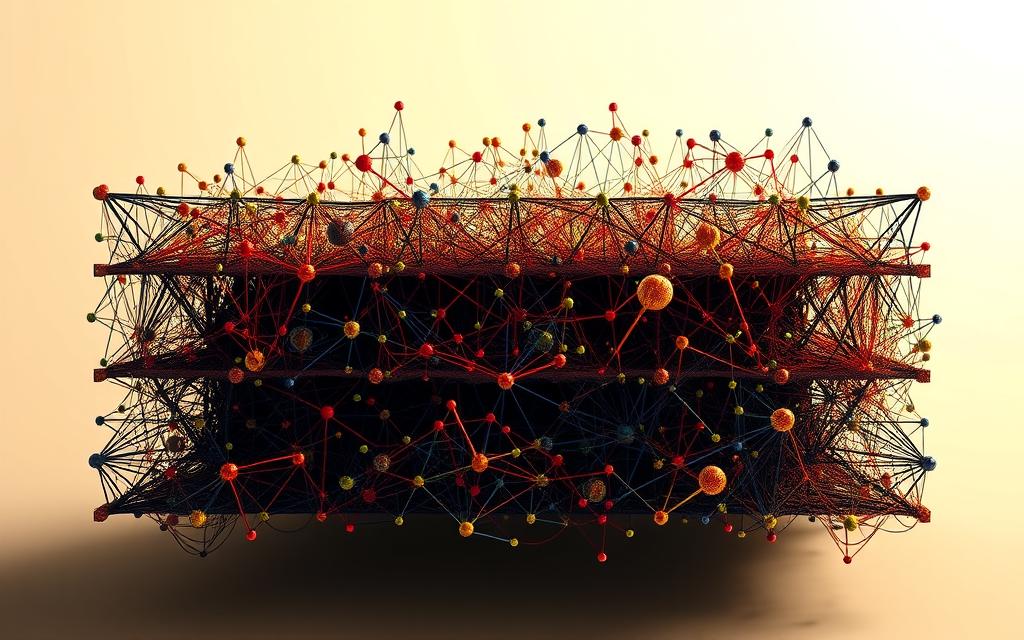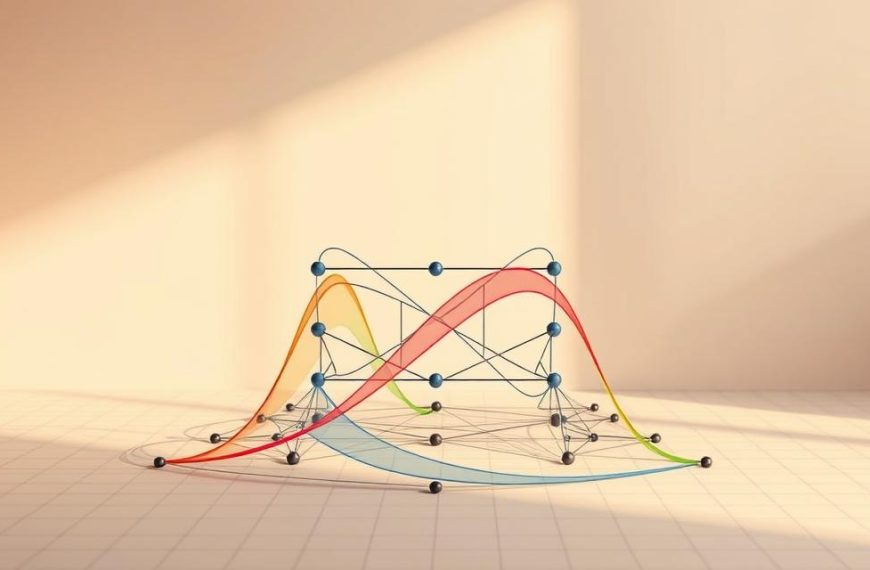Modern computing relies heavily on neural networks to power everything from voice assistants to medical diagnostics. These systems mimic human cognition through interconnected layers of artificial neurons, processing information in ways traditional algorithms cannot. At their core, they’re built using three primary components: input, hidden, and output layers. Each plays a distinct role in transforming raw data into actionable insights.
Confusion often arises when distinguishing between true layers and auxiliary components. Educational resources sometimes conflate terms, leading to misunderstandings about what constitutes a layer versus a computational step. This clarity gap can hinder both learning and practical implementation.
For professionals, grasping this architecture is critical. A well-designed model depends on precise layer configuration to optimise performance. Misclassifying elements risks creating inefficient systems or inaccurate outputs. This guide cuts through jargon, offering straightforward explanations of how these networks process information layer by layer.
By focusing on real-world applications, we’ll clarify common misconceptions. You’ll learn to identify which components qualify as genuine layers and why certain elements fall outside this definition. Whether you’re refining existing networks or building new ones, this knowledge ensures your designs align with industry best practices.
Understanding Neural Networks and Their Layers
Layered structures enable machines to learn complex patterns effectively. These components form hierarchical pathways where raw information undergoes transformative analysis. Three principal elements govern this process: input, hidden, and output tiers.
Defining Input, Hidden and Output Layers
The input layer receives unprocessed data, such as pixel values or sensor readings. Each feature corresponds to a node, transmitting signals to subsequent tiers. For example, in facial recognition systems, nodes might represent edges or colour gradients.
Hidden layers perform intricate calculations using weighted connections and bias values. Frank Rosenblatt’s 1958 perceptron laid groundwork for modern adaptations like sigmoid neurons, which output values between 0 and 1. These tiers progressively identify patterns—edges become facial features, then full structures.
Finally, the output layer delivers actionable results. Classification tasks might use one node per category, while regression models produce numerical predictions.
The Role of Layers in Data Processing and Model Learning
Each tier refines information through mathematical operations. Early hidden layers detect basic elements, while deeper ones synthesise complex relationships. This hierarchical approach enables systems to minimise errors by adjusting weights during training.
| Layer Type | Nodes | Primary Function | Example Application |
|---|---|---|---|
| Input | Matches data features | Data ingestion | Image pixels |
| Hidden | User-defined | Pattern extraction | Edge detection |
| Output | Task-dependent | Result generation | Classification labels |
This architecture’s strength lies in its adaptability. Designers adjust layer counts and node distributions to optimise performance for specific tasks, from medical diagnostics to financial forecasting.
Which of the following is not a neural network layer?
Many learners mistakenly classify computational steps as standalone layers. This confusion stems from how neural systems visualise operations versus their structural reality. True layers consist of organised neuron groups, while mathematical processes serve as connective tissue between them.
Common Misconceptions About Neural Network Elements
Activation functions frequently get mislabelled as layers despite being transformation tools. These functions – like ReLU or sigmoid – modify outputs but don’t contain trainable parameters. They’re applied after weight calculations, determining whether neurons fire based on threshold values.
Weight matrices and bias terms form connection bridges between layers rather than independent tiers. The fundamental layers in artificial neural networks rely on these parameters to process signals, but they’re components within layers, not layers themselves.
Clarifying Process Components Versus True Layers
Matrix multiplication and bias addition constitute essential calculations within layer operations. While critical for output generation, these steps represent mathematical procedures rather than structural elements. Visual diagrams sometimes depict them separately, leading to incorrect architectural interpretations.
Understanding this distinction proves vital when analysing model architectures. Proper terminology prevents miscommunication during development and troubleshooting phases. Designers must recognise that while activation steps influence data flow, they don’t qualify as distinct processing tiers.
Practical Insights and Modern Applications
Real-world implementation transforms theoretical concepts into industry solutions. Systems leveraging machine learning now automate complex tasks across healthcare, finance, and transport sectors. Google’s search algorithms exemplify how layered architectures process queries faster than manual methods.
Implementing Neural Networks in Machine Learning
Design choices directly impact model effectiveness. Practitioners select architectures based on problem types:
| Network Type | Structure | Primary Use |
|---|---|---|
| Feedforward (MLP) | Sequential layers | General classification |
| Convolutional (CNN) | Spatial hierarchies | Image recognition |
| Recurrent (RNN) | Cyclic connections | Time-series analysis |
CNNs excel in detecting patterns within pixel matrices, while RNNs handle sequential data like speech or stock trends.
Interpreting Activation Functions and Parameters
Non-linear functions determine neuron firing thresholds. ReLU remains popular for avoiding gradient saturation in deep learning models. Weight matrices and bias terms evolve during training, guided by the cost function:
MSE = 1/2m ∑(ŷ⁽ⁱ⁾ – y⁽ⁱ⁾)²
This equation quantifies prediction errors, steering gradient descent adjustments. Proper parameter tuning ensures models generalise rather than memorise.
Visualising Neural Networks
Diagrammatic tools clarify layer interactions and weight distributions. Flowcharts highlight bottlenecks or redundant nodes needing pruning. Autonomous vehicle developers use these visualisations to optimise real-time image recognition systems.
Effective implementation balances mathematical rigour with practical experimentation – a hallmark of modern AI advancement.
Conclusion
From early computational models to today’s AI breakthroughs, neural networks have transformed how machines interpret complex data. Warren McCulloch and Walter Pitts’ foundational work on artificial neurons laid the groundwork for Frank Rosenblatt’s perceptron, evolving into multi-layered deep learning systems. Understanding structural components – particularly the distinction between true layers and supporting elements – remains vital for effective machine learning implementation.
Modern applications in image recognition or predictive analytics rely on precise architectural designs. Input, hidden, and output layers form the backbone, while activation functions and weights serve as adjustable parameters within this framework. Misclassifying these elements risks creating inefficient models or inaccurate outputs.
As industries adopt AI solutions, clarity in terminology ensures professionals build optimised systems. Future innovations will continue refining neural networks, but their success hinges on mastering these core principles. Whether developing medical diagnostics or autonomous vehicles, accurate layer configuration remains non-negotiable for cutting-edge results.
















